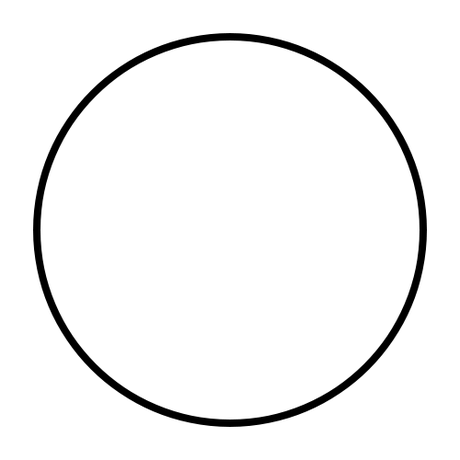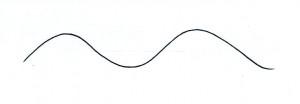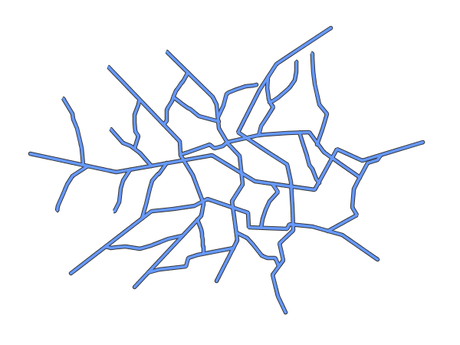Last night I was reading Wooden Leg (1931), a classic ethnohistory about the famous Cheyenne warrior who fought at the Little Bighorn, and came across this passage:
“Another thing the white people appear not to understand: The old Indian teaching was that it is wrong to tear loose from its place on the earth anything that may be growing there. It may be cut off, but it should not be uprooted. The trees and the grass have spirits. Whatever one of such growths may be destroyed by some good Indian, his act is done in sadness and with a prayer for forgiveness because of his necessities, the same as we were taught to do in killing animals for food or skins” (Bison ed. at 374).
In the past I’ve interpreted these kinds of comments primarily through a standard animist (or Tylorian) lens, and may have glossed it secondarily with some ideas derived from cultural ecology. But after reading Tim Ingold’s (2006) “Rethinking the Animate, Re-Animating Thought,” my understanding of this comment is now rooted in richer animist loam.
Ingold starts with a simple diagram that depicts the way in which we, heirs of a peculiar kind of Cartesian dualism, perceive ourselves as beings in the world:
 In this depiction, the self is experienced as a bundle or capsule. The inner (and supposedly) autonomous self is set off against an external environment, which we typically and categorically call “nature.” Given this way of perceiving, experiencing, and being, we say “I am in here; nature is out there.”
In this depiction, the self is experienced as a bundle or capsule. The inner (and supposedly) autonomous self is set off against an external environment, which we typically and categorically call “nature.” Given this way of perceiving, experiencing, and being, we say “I am in here; nature is out there.”
There is nothing given, necessary, or a priori about this particular way of perceiving, experiencing, and being (in the world). We can, therefore, depict the self differently:
 In this depiction, there is no self “in here” that interacts with nature “out there.” There are no boundary conditions which set the internal (self) off or against an external (environment). As Ingold observes:
In this depiction, there is no self “in here” that interacts with nature “out there.” There are no boundary conditions which set the internal (self) off or against an external (environment). As Ingold observes:
[T]here is no inside or outside, and no boundary separating the two domains. Rather there is a trail of movement or growth. Every such trail traces a relation. But the relation is not between one thing and another — between the organism “here” and the environment “there.” It is rather a trail along which life is lived.
What is most remarkable, however, is the way in which this relational conception of being alters our taken-for-granted ideas about “in here” and “out there.” What seemed so natural no longer seems so natural.
This conception of self and being, however, is not properly depicted with a single trail. A single line implies an encapsulated or bounded self, moving from one point or moment to another without being much affected. When life is conceived as a relational unfolding, movement along the trail brings the self not just into contact with another bounded being or thing; it brings the self into relation with another being or thing. In this way, the self becomes enmeshed in a tangle of relations that are better depicted this way:
 Life, in other words, is more like lattice-work or what Ingold calls a “meshwork” in which an organism should be imagined “not as a self-contained object like a ball that can propel itself from place to place, but as an ever ramifying web of lines of growth. The philosophers Gilles Deleuze and Félix Guattari (1983) famously likened this web to a rhizome.”
Life, in other words, is more like lattice-work or what Ingold calls a “meshwork” in which an organism should be imagined “not as a self-contained object like a ball that can propel itself from place to place, but as an ever ramifying web of lines of growth. The philosophers Gilles Deleuze and Félix Guattari (1983) famously likened this web to a rhizome.”
The point of all this, Ingold asserts, is that animists conceive of life in this way. Several scholars agree, and I must admit that this conception has enabled me to make some sense of things in the hunter-gatherer ethnohistoric record that used to puzzle me, or which I simply ignored because it didn’t fit my habitual binary of inner-outer.
It is at this point (or line) that Ingold grows the rhizomatic metaphor in a manner that deserves extended consideration:
But what, now, has happened to the environment? It cannot be what literally surrounds the organism or person, since you cannot surround a web without drawing a line around it. And that would immediately be to effect an inversion, converting those relations along which the organism-person lives its life in the world into internal properties of which its life is but the outward expression. We can imagine, however, that lines of growth issuing from multiple sources become comprehensively entangled with one another, rather like the vines and creepers of a dense patch of tropical forest, or the tangled root systems that you cut through with your spade every time you dig the garden. What we have been accustomed to calling ‘the environment’ might, then, be better envisaged as a domain of entanglement. It is within such a tangle of interlaced trails, continually ravelling here and unravelling there, that beings grow or ‘issue forth’ along the lines of their relationships.
This tangle is the texture of the world. In the animic ontology, beings do not simply occupy the world, they inhabit it, and in so doing — in threading their own paths through the meshwork – they contribute to its ever-evolving weave. Thus we must cease regarding the world as an inert substratum, over which living things propel themselves about like counters on a board or actors on a stage, where artefacts and the landscape take the place, respectively, of properties and scenery. By the same token, beings that inhabit the world (or that are truly indigenous in this sense) are not objects that move, undergoing displacement from point to point across the world’s surface. Indeed the
inhabited world, as such, has no surface.
Brilliant. It makes me think that when Wooden Leg said “the trees and grass have spirits,” what he meant and what most of understand are probably two different things.

